Life with the Lenovo Yoga 2 Pro
by Brett Howse on July 30, 2014 2:00 PM EST- Posted in
- Notebooks
- Lenovo
- Windows 8.1
- Yoga
General Performance
With an Intel Core i5 4200U, 4GB of DDR3L-1600, and a 256GB Samsung SSD inside, we are right in the middle of the road as far as the Yoga 2 configurations available. It is standard fare for an Ultrabook, though the 4GB models are thankfully being phased out by most OEMs now. Being that this device can pull double duty as a laptop or a tablet, we will also do some comparisons on the tablet side.
Performance Graphs
We’ll start with general performance. PCMark gives us an evaluation of several scenarios, as well as storage performance. Being designed as a laptop, the Yoga 2 Pro does not suffer as harshly from throttling as something like the Surface Pro 3 does, although the SP3 does have the slightly faster i5-4300U.
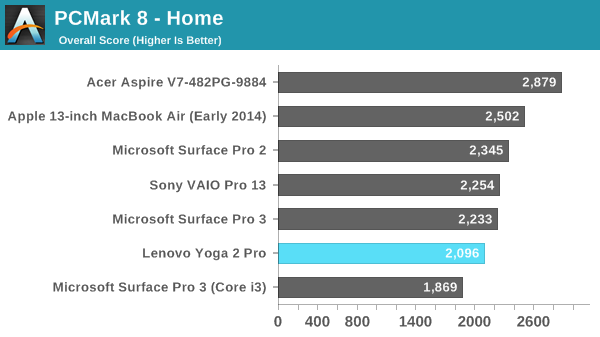
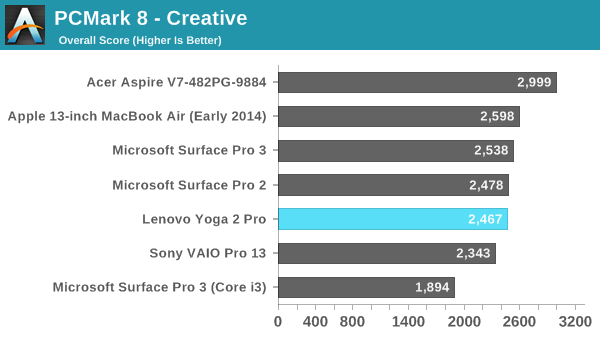
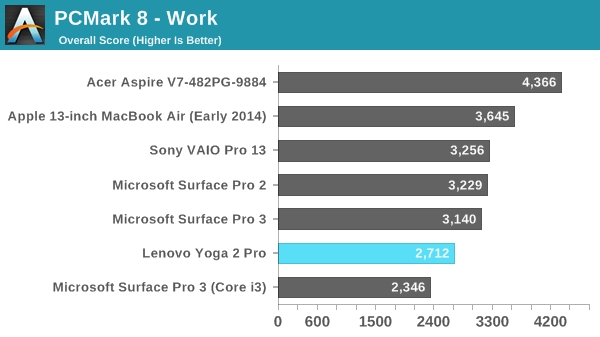
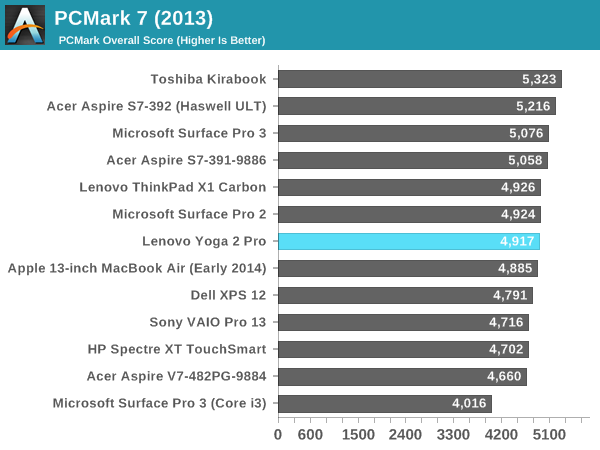
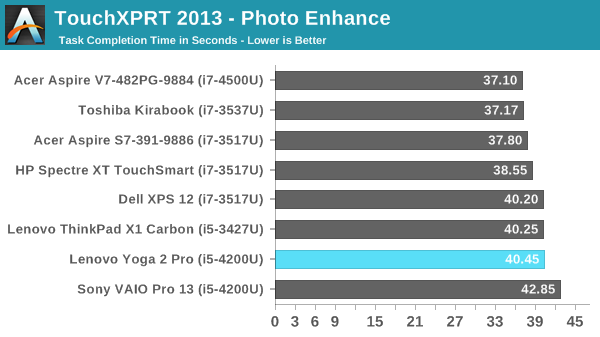
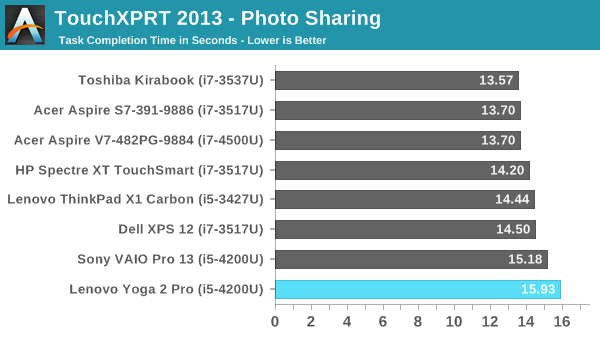
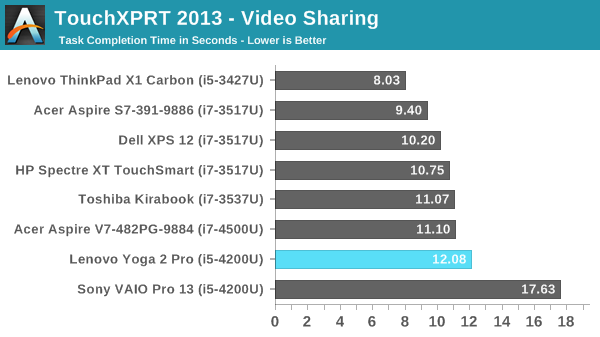
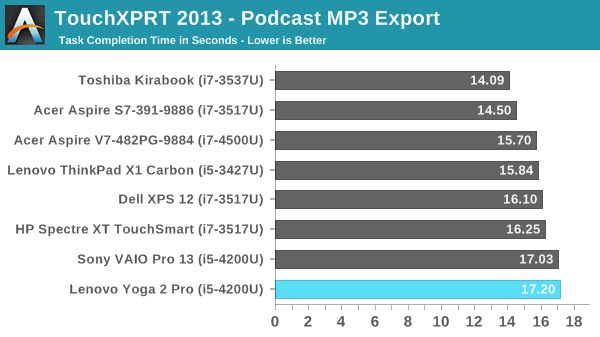
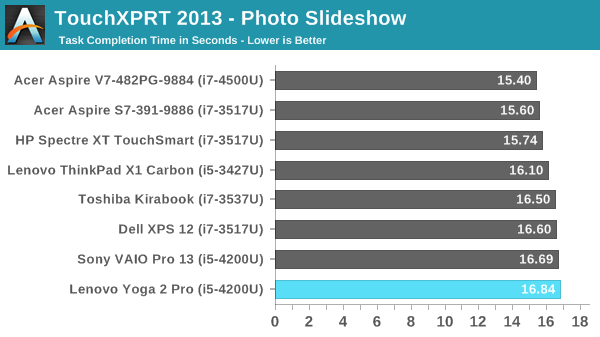
Performance is right where we’d expect it to be for the 4200U. There were no signs of throttling during normal operation.
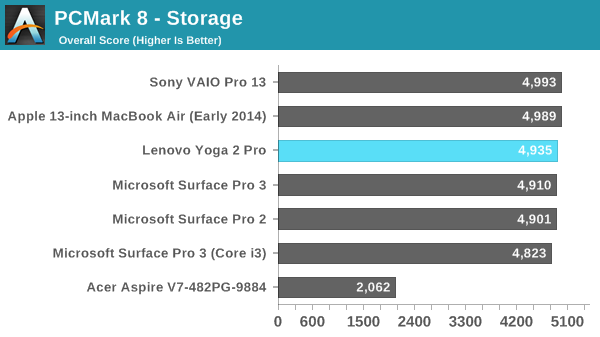
For storage, the Yoga 2 Pro comes equipped with a Samsung OEM SSD. This is likely the same drive used in other devices such as the Surface Pro 3, and the performance is similar. We'll likely need to wait for the next generation Yoga before we see M.2 PCIe SSDs improve storage performance.
Gaming Performance
While the Yoga 2 Pro is certainly not considered a gaming machine, a user may want to play the odd game on it. With Intel HD 4400 graphics though, it would be practically impossible to game at the native resolution of this panel.
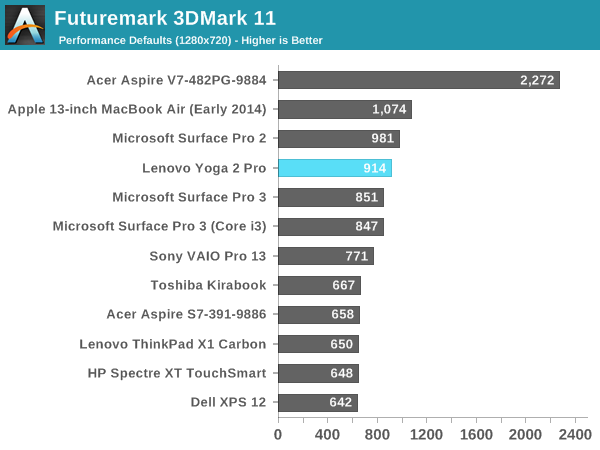
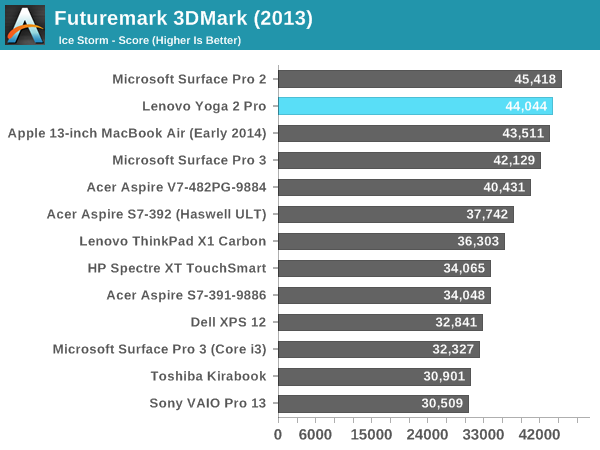
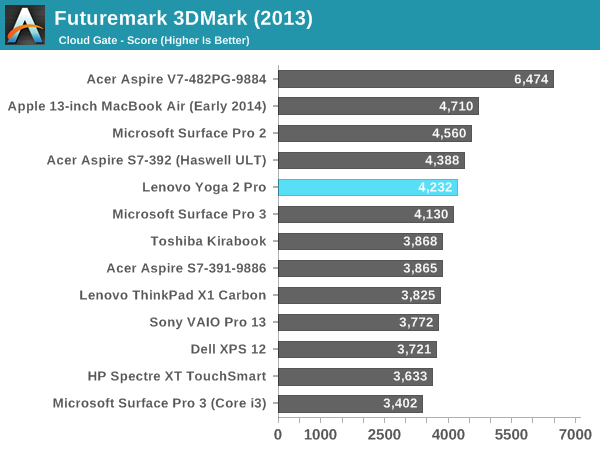
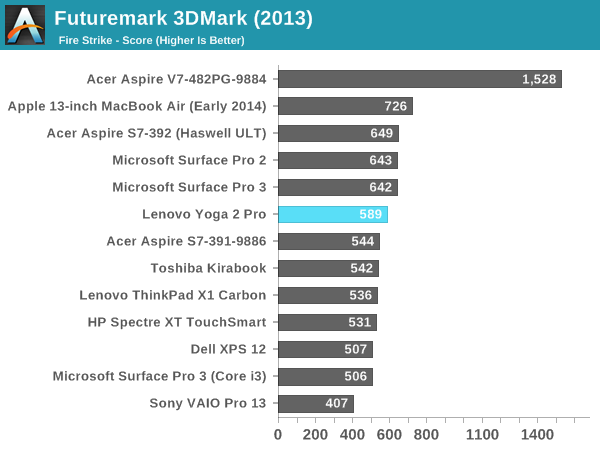
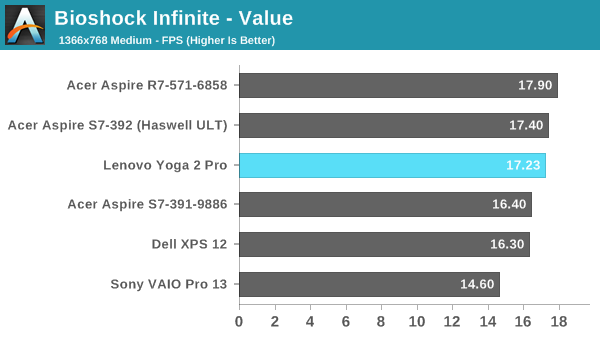

With the Intel HD 4400, the Yoga 2 Pro does fine in low demand benchmarks such as Ice Storm, but it is quickly taxed to the point of being unusable on titles with more graphically intensive workloads. Tomb Raider and Bioshock, even at the value settings, are almost unplayable on the Yoga 2 Pro. You'll want to either drop to minimum detail settings or stick to older/less demanding titles (and thankfully there are plenty of those available).










103 Comments
View All Comments
bullzz - Wednesday, July 30, 2014 - link
"advertised clock speed of 1.6 GHz with all four cores at 100% usage"isnt this a dual core CPU
JarredWalton - Wednesday, July 30, 2014 - link
There are two virtual cores as well, so this was tested with a 4-threaded load.mapesdhs - Wednesday, July 30, 2014 - link
Even so, it's not correct to refer to four cores, that could easily confuse people.Personally I don't know how Intel gets away with using the i7 label for these
CPUs when they're all just dual core.
Ian.
TiGr1982 - Wednesday, July 30, 2014 - link
1. Then one should refer to four threads (as Intel names it itself officially).2. Well.. AFAIU, "i7" is just a brand, meaning "the top notch among its device class", happens to have HT, and in general has nothing to do with the particular number of physical cores:
1) i7 has 2 cores in ULV class
BUT
2) i7 has 4 cores in medium/big laptop class
3) i7 has 4 cores in mainstream desktop class
BUT
4) i7 has 6 (soon to be 8) cores in extreme desktop class
So "i7" is just a brand, supposed to make the customer think "Wow, this thing is gonna be fast".
As Semiaccurate founder calls it "iSomethingmeaningless" from the point of purely tech specs per se.
Brett Howse - Wednesday, July 30, 2014 - link
Thanks for the comment you are of course correct, it's 2 physical cores and 4 threads. Looks like Jarred already edited that sorry for the confusion.Dug - Thursday, July 31, 2014 - link
Same with i5. My desktop i5 is quad core, but my laptop is dual core.TiGr1982 - Friday, August 1, 2014 - link
Indeed; only i3 is more or less consistent (2 cores, 4 threads, no Turbo).Besides, Pentium and Celeron (based on big cores) are also consistent (when one does take into account Atoms rebranded as Celeron and Pentium).
TiGr1982 - Friday, August 1, 2014 - link
I meant, "when one does NOT take into account Atoms rebranded as Celeron and Pentium".Alexey291 - Saturday, August 2, 2014 - link
Essentially Intel CPU branding is a sordid mess - after all is said and done :)wetwareinterface - Sunday, August 3, 2014 - link
actually the pentium branding is anything but consistent right now.there are pentium cpus out right now that are based on 3rd generation dual core i3's with half the cache
dual core low voltage i3 half cache and 1-200 Mhz lower clocks than u series i3
and dual core 4th generation cores with no quick sync and hd 4000
and quad core 4th gen with quick sync enabled and hd 4000